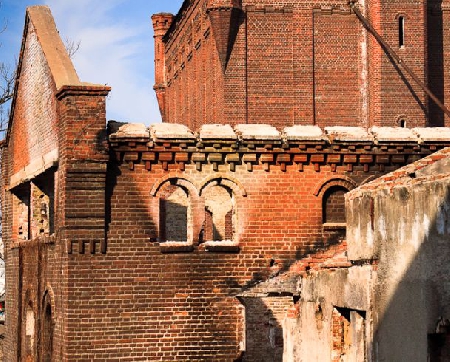Steam Engines in Romania
The Bucharest Technical Museum, created in 1909 by engineer Dimitrie Leonida, bearing the founders name, has a collection of engines that have been crucial to Romanias past development in industry.

România Internațional, 10.10.2015, 14:29
The Bucharest Technical Museum, created in 1909 by engineer Dimitrie Leonida, bearing the founders name, has a collection of engines that have been crucial to Romanias past development in industry. An essential part of this collection are steam engines of various applications, the type that fueled the early development of industry in Europe, which reached Romania as late as the second half of the 19th century. The first, and probably the most famous, is the steam plant that powered Assans Mill in Bucharest. It belonged to George Assan and Ion Martinovici, and had a tower 24 meters tall, and was used by the inhabitants of Bucharest to mill wheat. Aurel Tudorache, museographer with the Technical Museum, tells the story of Assans Mill:
“It was brought over from Vienna, in 1853, and it took about two weeks to reach Giurgiu. It then took four more weeks to reach Bucharest, because they had to reinforce all the bridges in-between. It was carried by oxcart. How did Bucharesters see the use of a steam plant? After it was installed and tested, Bucharesters saw that smoke was coming out of the chimney and did not want to come to Assans Mill, because they were afraid their flour would catch on fire. The winter of 1853 was very cold, and all the mills on Dambovita River, which offered alternatives to Assans Mill, got frozen and one baker decided to take a chance. He came to Assans Mill, saw that the flour did not catch on fire, and the others followed suit, and suddenly the mill was overcrowded.
Another steam engine in the Bucharest Technical Museum is the one that provided electricity for the first time to the National Theater in the capital. It is a French Brule 1884 model, as Aurel Tudorache told us:
“They started to install it in 1884, but there were some delays. In 1885 there was a test run, and the National Will newspaper wrote: ‘Last night, the National Theater was illuminated by electricity for the first time. This beginning was a great success, especially since the show was one of Mr. Caragiales famous plays. This article was published on April 10 1885, but the plant started functioning for good in July 1885.
The museum actually features a steam powered automobile, a Gardner-Serpollet. In early 20th century, there were steam powered automobiles, and in 1902 a Gardner-Serpollet automobile set a world record for speed. Aurel Tudorache told us about the car in the museum:
“The museum description, created in 1968, tells us that the Gardner-Serpollet automobile was manufactured in 1893, and in 1895 it was brought to Bucharest City Hall. The description that dates back to 1980 tells us, however, that the date is uncertain. If we realize that the company Gardner-Serpollet was created in 1898, and that the automobiles built under this name appeared in 1900, we have a problem. If we look at the chassis, however, we find out a few interesting things. The automobile is definitely a Gardner-Serpollet. I am more and more convinced that this is a car built after 1900. Other controversial data refer to the reason for which the car was brought to Bucharest. However, Dimitrie Leonida, the founder of the museum, claimed that at some point the car was bought to take cartloads of trash to the city dump on the periphery of the city. We have basically two pieces of information that dont match. However, we know that the car was donated to Dimitrie Leonida by a mechanic who had bought it at an auction from City Hall. The data about the use the car was put to was also obtained from this mechanic. This leads me to believe that the car was initially used by City Hall staff. It was only it outran its use that it pulled trash carts.
These are just a few of the steam engines in the Technical Museum. They are unique in Romania, considering that even in many other countries such engines are rare.





























